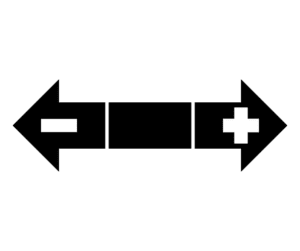Our water and sewer team reads water meters four times per year in late March, June, September and December. Water meter reading is captured with an antenna that collects the reading from the Water meter and the reading is sent to the finance department for billing. All water use, including water consumed by leaks is your responsibility and will be charged to your utility account.
Here’s a very important question for every property owner. Do you know where your mater meter and internal main water shut-off valve are located in your building? By knowing where these are located, it can minimize or prevent problems.
Your water meter is generally located in your basement, along the front wall and near the floor, after your main shut-off valve. Often near the hot water heater, water softener, or furnace. If you don’t have a basement, look for it in a crawlspace or on the main floor.

Water meters are the property of the Nation Municipality. However, you are responsible for taking care of it and all your inside plumbing, including pipes and water shut-off valves. All plumbing components of the house is the responsibility of the homeowner including the incoming water service and the water shut-off valve.
Always maintain clear access to the meter and provide adequate heating to prevent damage during freezing winter temperatures. If your water meter is damaged or frozen because you didn’t take proper care of it, owner will have to pay for the meter replacement.

Our water meters are battery-powered but feature a solar-powered screen. To read your water meter, simply open the cover and shine a flashlight directly onto the screen to illuminate the display.

If your water meter reading is constantly going up, you might have a leak. Check the leak detection tab below.
The icons on your water meter display can help detect leaks. For example, if a faucet icon appears, it usually means there’s a leak somewhere after the water meter, see table below. Here’s how to check for leaks:
1. Check Your Water Meter Display:
If the numbers on your meter are moving even when no water is being used in your home, you likely have a leak.
| Icon | Description | |
 |
Flow/Leak Indicator shows the direction of flow through the meter: | |
| ON | Water in use. | |
| OFF | Water not in use. | |
| Flashing | Water is running slowly / low flow indicator. | |
 |
Leak indicator displays a possible leak: | |
| OFF | No leak indicated. | |
| Flashing | Intermittent leak indicated. Water used during at least 50 of the 96 days of 15-minute intervals, during the previous 24-hour period. | |
| Continuous ON | Continuous leak indicated. Water used during all 96 days of 15-minute intervals, during the previous 24-hour period. | |
2. Common Sources of Leaks:
Toilets: Toilets are a frequent cause of leaks. To test, put food coloring or dye tablets in the tank (not the bowl) and wait 10-15 minutes without flushing. If the color appears in the bowl, you have a leak.
Hot Water Tank: Inspect for drips or moisture around the tank.
Sprinkler Systems: Look for wet spots in your yard or water pooling near sprinkler heads.
Water Softeners: Faulty parts in a water softener can lead to excessive water use. Regular servicing can help prevent this.
3. Emergency Action:
If you find a significant leak, turn off the water supply to your home using the main shut-off valve. This stops water flow while you make repairs or call a plumber.
By addressing leaks quickly, you can save water and reduce your utility bill. If the water meter itself is leaking, contact us.
A sudden increase in your water bill may occur for several reasons, including:
If your bill unexpectedly rises, it’s possible you have a leak in your private plumbing system. Please note that all water use, including water wasted due to leaks, is your responsibility and will be billed according to the established tier rates set out in the Water Maintenance Fee By-law.
For guidance on detecting and addressing leaks, visit our Leak Detection section. Addressing leaks promptly can help you avoid unnecessary costs.